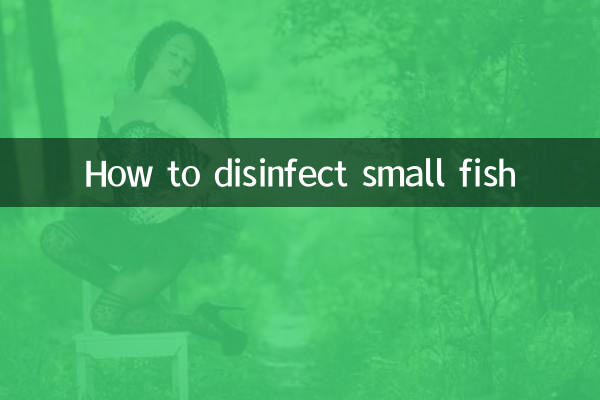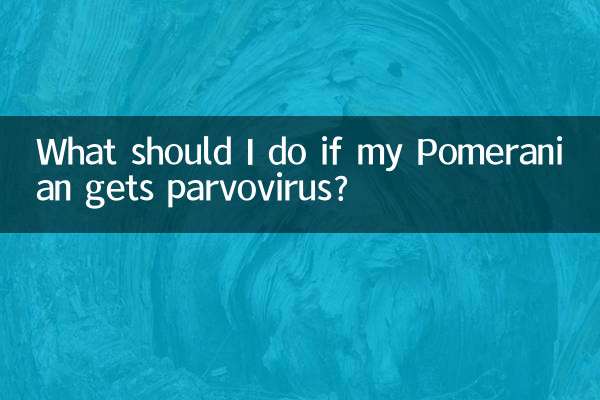How to disinfect small fish
In the process of fish farming, disinfecting small fish is a very important link, which can effectively prevent the spread of diseases and improve the survival rate of fish. This article will combine the hot topics and hot content on the Internet in the past 10 days to give you a detailed introduction to the methods, precautions, and answers to frequently asked questions about disinfecting small fish.
1. The importance of disinfection of small fish

Disinfection of small fish can not only kill pathogens, but also reduce water pollution and avoid cross-infection. Disinfection is essential especially when new fish are introduced into the tank or when diseases appear in the fish group.
2. Common disinfection methods
| Disinfection method | Applicable scenarios | Operation steps | Things to note |
|---|---|---|---|
| salt water bath | New fish entering the tank, mild infection | 1. Prepare 3% salt water 2. Soak the small fish for 5-10 minutes 3. Observe the fish’s reaction | The time should not be too long to avoid stress |
| Potassium permanganate solution | Serious infections, parasites | 1. Prepare light pink solution 2. Soak for 10-15 minutes 3. Rinse thoroughly | Excessive concentration will harm fish bodies |
| UV disinfection | water disinfection | 1. Install UV lamp 2. Irradiate for 1-2 hours every day | Avoid direct exposure to fish body |
| Drug disinfection | bacterial infection | 1. Take the medicine according to the instructions 2. Isolate sick fish and treat them | Pay attention to drug residues |
3. Disinfection precautions
1.Control concentration and time:If the concentration of the disinfectant is too high or the soaking time is too long, it may cause harm to small fish.
2.Observe the fish’s reaction:During the disinfection process, the status of the small fish should be closely observed. If there is any abnormality, stop immediately.
3.Isolation and disinfection:New or sick fish should be disinfected separately to avoid infecting other healthy fish.
4.Water quality management:After disinfection, part of the water body should be replaced in time to keep the water clean.
4. Frequently Asked Questions
Q1: How often should small fish be disinfected?
A1: Under normal circumstances, it is enough to disinfect the new fish once they enter the tank. If there is a disease in the fish group, it can be disinfected 1-2 times a week according to the situation.
Q2: Can household disinfectant be used to disinfect small fish?
A2: Absolutely not! Household disinfectants contain chemicals that are harmful to fish, and special fish disinfectants must be used.
Q3: What should I do if the small fish does not eat after disinfection?
A3: This is a normal phenomenon. After disinfection, the small fish may have a stress period of 1-2 days. Just reduce the feeding amount and keep the water quality stable.
5. Comparison of popular disinfection methods across the Internet
| method | heat index | advantage | shortcoming |
|---|---|---|---|
| salt water bath | 85% | Simple, easy and low cost | Limited effect |
| potassium permanganate | 72% | Good sterilization effect | High operational requirements |
| UV rays | 68% | No chemical residue | High equipment cost |
| Chinese medicine disinfection | 55% | Natural and non-irritating | Slow results |
6. Latest Disinfection Trends
1.Probiotic disinfection method:Inhibiting the growth of harmful bacteria through beneficial bacteria is becoming a popular new disinfection method.
2.Nanotechnology Disinfection:The use of nanomaterials for water purification is the direction of future development.
3.Intelligent monitoring and disinfection:Combined with IoT technology, water quality is monitored in real time and the disinfection plan is automatically adjusted.
7. Summary
Disinfecting small fish is an essential part of the fish farming process. Only by choosing a suitable disinfection method and mastering the correct operating procedures can the healthy growth of small fish be ensured. It is recommended that novices start with a simple salt water bath and gradually try other methods. Remember, prevention is better than cure, and maintaining good water quality is fundamental.

check the details

check the details